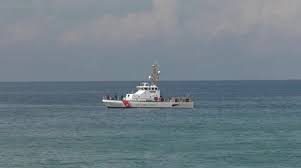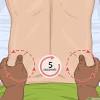قراءة المزيد
Coast Guard offers a second physical exam as an addition to the written one. Each applicant must submit to a medical exam conducted by a state-certified doctor. This test will assess your ability to safely carry out the duties of the Coast Guard post. This examination involves discussion about your medical history, physical exam, and other specialist tests.
What is the physical required to get a merchant seaman credential?
Anyone who is licensed to operate vessels commercially can apply to the U.S Coast Guard merchant Mariner Credential. Coast Guard requirements for anyone renting a boat include a Merchant Marine Credential. This applies to all activities related to boats.
The most important exam to pass in order to be a successful merchant mariner is the physical exam. Candidats for merchant mariner positions must pass a thorough physical exam which includes a medical history as well an examination.
A merchant mariner’s physical exam is conducted to assess whether a potential employee is physically fit for the job. The comprehensive examination of merchant mariners is done to determine their health. The comprehensive examination measures both the person’s mental and physical capabilities, as well their flexibility. It also assesses the risk to crew members and vessels.
Before a commercial ship captain can be certified, he/she must pass a medical exam. The medical exam also requires a history and physical exam. An eye and drug test is also required.
Coast Guard is concerned with America’s safety and the security of America’s coast, as well as waterborne commerce and natural resource protection. Coast Guard requires Coast Guard members be at least a certain level in physical fitness to carry out its mission. It is important that you have high levels of mental sharpness. Coast Guard administers both mental and physical tests to assess applicants’ ability to serve with the Coast Guard.
The Merchant Marine and Coast Guard physical exams are used to determine if a candidate is eligible for work as commercial sailors. All physical requirements are considered, including strenuous lifting or prolonged sitting.
What are the requirements for the physical examinations of Coast Guard or Merchant Mariner personnel?
Every applicant for Merchant Marine must have a complete physical exam. Before you can board a ship commercially, the Coast Guard will conduct thorough physical exams. The examination lasts two hours and includes a history, a physical exam, and a history
A DD214 Application is required before the Coast Guard will arrange your physical. You can request an older enlistment duplicate or apply again. For your DD-214 form to be valid, please provide service records and paytubs as well as any other supporting information that could support your medical history.
Coast Guard conducts a physical exam in order to determine whether you are physically fit for service. This includes a written test, a physical, and a detailed medical history. Your medical history is reviewed. If you have any health problems or injuries, the doctor will ask for details. The doctor will want to know about your current health, any medications you have taken, and any recent surgeries. The doctor will examine all areas of your body, including your head, arms, legs, hips, and neck.
Hooyah, future Coast Guardsmen! If you’re currently thinking about joining the Coast Guard, you’re going to have to pass through all the stages of Coast Guard basic training first. This is no easy task, as it requires peak physical fitness, intellectual sharpness, and strong morals.
Coast Guard PhysicalIf you think you’re ready to become a Coast Guardsman, keep reading to learn almost everything there is to know about Coast Guard basic training.
Want to know something specific about basic? You can use the links below to dive right into that information. Family members can find their information at the very end of the page.
A base level of physical fitness is expected of all recruits. Men and women have different physical fitness expectations.
29 push-ups in one minute 38 sit-ups in one minute 1.5-mile run in less than 12:51 16.50” sit and reach Complete a swim circuit Tread water for five minutes Swim 100 meters (~328 feet) after jumping off a 6-foot platform Women 15 push-ups in one minute 32 sit-ups in one minute 1.5-mile run in less than 15:26 19.29” sit and reach Complete a swim circuit Tread water for five minutes Swim 100 meters (~328 feet) after jumping off a 6-foot platform If you’re not an exceptionally strong swimmer, the Coast Guard does offer extra swim training to help you prepare for your career as a Coast Guardsman. However, you should probably make sure you can AT LEAST stay afloat before attempting to join the COAST GUARD. It’s common sense!
In addition to physical requirements, you must meet the following basic requirements to be able to join: You must be a U.S. citizen or full-time resident alien. You must be between the ages of 17 and 31. You must have a high school diploma (GEDs are only accepted in exceptional special circumstances). You can have no more than three dependents. You’ll need to pass the Armed Services Vocational Aptitude Battery (ASVAB) test. You must pass the basic entrance medical exam. How Long Is Coast Guard Basic Training? Coast Guard basic training lasts for eight weeks. The process is full of both physical and mental conditioning, so you better be prepared!
Yep! All Coast Guard recruits do receive pay for Coast Guard basic training. You’ll usually be paid as an E-1, which would get you somewhere around $1,785 per month (just over $21,000 per year). That’s why you need to bring a direct deposit form from your bank on day one.
You NEED to bring a state-issued ID, like your driver’s license, and a direct deposit form from your bank.
There are a few items that you’re recommended to bring to Coast Guard basic training.
A multi-pack of white, V-neck shirts 10+ pairs of underwear Toothbrush & toothpaste A watch Up to $50 in cash to use at the exchange An address book with stamps Neutral-colored hair ties (for women) Feminine products (for women) Sports bras (for women) Shampoo/conditioner (for women)
The Coast Guard will provide many things for you at boot camp, so you don’t have to worry about packing them. These include:
Floss Soap Deodorant Towels Shower shoes Laundry bags Tennis shoes and socks Paper and pens Coast Guard Basic Training Phases
So, what is basic training like? We won’t lie; it’s tough. Before you hop into Coast Guard basic training, it might be a good idea to prepare yourself at home. You definitely don’t want to be that recruit who’s always falling behind or failing every physical fitness test. If you haven’t already, come up with a challenging workout routine for yourself. Throw in jogging, strength training, and swimming (DEFINITELY practice swimming before you get there).
Need to whip yourself into shape? Read tips straight from a Marine in this blog: 5 Secrets To Stop Being a Fat Civilian – Marine Approved
Don’t underestimate the importance of your local recruiter. They’ve quite literally been there, done that, so they can answer all your questions, small or large. Think about where you might want to serve after training, and look through a Coast Guard job list to see what kinds of careers in the Coast Guard might suit you best.
Week one is filled with paperwork and intake forms. You’ll go through your medical screening to make sure you’re in good shape, receive your official uniform, meet your Company Commander (CC), and get your Recruit Training Company assignment.
Provided you look presentable, there are no precise rules for family members looking to attend their recruit’s graduation ceremony. Want to play it safe? Go business casual! No one will reprimand you for wearing jeans and a sweatshirt, but you might want to represent your recruit a little bit better than that.
Coast Guard basic training is far from easy. With the right preparation and proper mindset, you can tackle it and be a star recruit. But that means you have to put a lot of effort into training and learning during your time in boot camp and even before.
Experience and service on military or foreign vessels is creditable towards eligibility for a U.S. Merchant Mariner’s Credential (MMC). Such service is subject to evaluation by the Coast Guard to determine that it is a fair and reasonable equivalent to service acquired on merchant vessels of the United States, with respect to grade, tonnage, horsepower, waters, and operating conditions.
Satisfactory evidence of U.S. military service means a Transcript of Military Sea Service or certified History of Assignments (a DD-214 is not sufficient evidence of sea service). If you do not already have proof of military sea service, you must fill out a Request Pertaining to Military Records (Form SF-180) to obtain your official Transcript of Military Sea Service. Send the request with your name and a return address, printed legibly, to the address of the record custodian for your branch of service noted on the back of the request form. In addition, if you are requesting records from before 1973 you should include your service number; after 1973 include your social security number.
Satisfactory evidence of foreign sea service must meet the requirements for proof of service for qualified ratings noted in section I.C. above. If the documentation is not in English, then a certified translation should be included.
You must be at least 16 years of age before obtaining a Merchant Mariner’s Credential (MMC). If you are between the age of 16 and 18, then you must present a notarized statement of consent from a parent or legal guardian providing written permission for you to go to sea.
(For TWIC or if you are not a us citizen) When submitting your application package for evaluation, you must include a copy of the proof of citizenship. You must present the original evidence of citizenship prior to issuance of an MMC. If your name on your proof of citizenship does not match the name you are now using, then proof of legal name change is required. Acceptable proof of name change may include original court documentation, original marriage/dissolution of marriage certificate, or original school records. Acceptable proof of citizenship and birth date is any one of the following:
Certificate of Naturalization (If you are a naturalized citizen, then you must submit this certificate) Baptismal Certificate or Parish Record recorded within one year after birth Statement of a practicing physician certifying attendance at the birth and who possesses a record showing the date and location at which it occurred State Department Passport A Merchant Mariner’s Credential issued by the Coast Guard which shows the holder as a United States citizen Delayed Certificate of Birth issued under a state seal Certificate of Citizenship issued by the United States Immigration and Naturalization Service What if I am not a U.S. citizen? You may still be considered for an MMC, but you must provide documentation that you are a permanent resident in possession of an Alien Registration Card issued by the U.S. Immigration and Customs Enforcement (ICE). In addition, you must also submit proof of foreign citizenship. Documentation that is not in English must include a notarized translation.
If you are applying for an original MMC, then you must establish proof of having a Social Security Number (SSN). Acceptable proof is a Social Security Card issued by the Social Security Administration (SSA). When submitting your application package for evaluation, you must submit a copy of your card. You must present the original card prior to issuance of an MMC. Your card must bear the same name appearing on your proof of citizenship and your application. If you have lost your card, you must apply for a duplicate card from the SSA. If you present a duplicate card or letter from the SSA, it must have your SSN on it. Plastic, metal or laminated cards are not acceptable.
Physical Exam Report (submit pages 3-4): CG-719K Certification of Fitness for Entry Level Ratings: CG-719K/E Medical and Physical Evaluation Guidelines: Medical NVIC USCG 2006-25080 Medical Waiver Submission Form: MLD-FM-REC-171 Article Regarding the Importance of Physical Evaluations: NVIC Outreach Article March 2007 When is a physical examination required? The table below lists when a physical examination is required for renewal:
If you are renewing a Certificate of Registry, Merchant Mariner’s Credential (MMC) with Lifeboatman, or MMC without qualified ratings and you plan to serve on a seagoing vessel beyond the boundary lines, then you need to provide proof of physical agility, strength, and flexibility. For more information, see Section D below.
If you are renewing a License or a Merchant Mariner’s Credential with a qualified rating other than Lifeboatman (LBMAN), then you must submit an original physical examination report ( Form CG-719K ) completed by a U.S. Licensed physician, physician’s assistant, or nurse practitioner within one year of the application. This report must certify that you are in good health and have no physical impairment or medical condition which would render you incompetent to perform the ordinary duties allowed by your credential. Please ensure this form has been completed entirely. Delays in approving applications are frequently the result of incomplete physical examination reports. For example, if you are taking any medications prescribed by your physician, then your physician must have all of the medications disclosed in block 15 of the form with a statement regarding whether or not you experience any side effects from them. If side effects are experienced, they must be listed. If no side effects are experienced, then a statement to that effect must be included.
Renewal of a License as deck officer or Merchant Mariner’s Credential as Able Seaman (AB) or Tankerman (TKMAN): You must have uncorrected vision of at least 20/800 in each eye, correctable to at least 20/40 in each eye. You must also possess normal color vision as determined by one of the methods listed on the CG-719K Physical Examination Report.
Coast Guard PhysicalRenewal of a License as engineer officer or Merchant Mariner’s Credential as Qualified Member of the Engine Department (QMED): You must have uncorrected vision of at least 20/800 in each eye, correctable to at least 20/50 in each eye. However, you only need to possess the color sensing ability to distinguish between red, green, blue and yellow.
For renewal of all licenses or Merchant Mariner’s Credentials with qualified ratings other than Lifeboatman, you must not have blood pressure higher than 160/100 if under the age 50 or higher than 175/100 if over 50, regardless of treatment or medication.
If you want more information on the Coast Guard’s physical examination standards, connect here to NVIC 2-98
If you are renewing a Certificate of Registry, Merchant Mariner’s Credential (MMC) with Lifeboatman, or MMC without qualified ratings, you are not required to submit a physical examination report (Form CG-719K). However, if you plan to work on seagoing vessels beyond the boundary lines, you will have to submit documentation from a U.S. licensed physician, physician’s assistant, or nurse practitioner certifying that you have the agility, strength, and flexibility to:
Climb steep or vertical ladders Maintain balance on a moving deck Pull heavy fire hoses up to 400 feet, and have the ability to lift fully charged fire hoses Rapidly don an exposure suit Step over door sills of 24 inches in height, and Open or close watertight doors that may weigh up to 56 pounds. What if I don’t meet the physical requirements? Not meeting the vision, hearing, or general physical condition required for renewal does not automatically cause you to be denied. The Commandant of the U.S. Coast Guard may consider you for a physical waiver if extenuating circumstances warrant special consideration. The REC reviewing your application may request that your physician provide additional information to support a waiver in such cases.
“Dangerous drugs” – under the Department of Transportation rules are: marijuana, cocaine, opiates, phencyclidine (PCP), and amphetamines. Proof that you are free of dangerous drugs is required with your renewal application. Only a screening that tests for the five dangerous drugs is accepted. All tests must be conducted in accordance with “Procedures for Transportation Workplace Drug Testing Programs” in Title 49 Code of Federal Regulations (CFR), Part 40 and done by laboratories certified by the Substance Abuse and Mental Health Services Administration (SAMHSA), an agency of the Department of Health and Human Services. All qualifying random and periodic drug-testing programs must also meet these requirements.
A listing of approved laboratories is also available online at www.drugfreeworkplace.gov. When the main page comes on screen click on “Drug Testing” and then click on “Certified Labs”. By contacting one of these labs they will direct you to the collection facility that is nearest to your location
A completed drug test form (report or letter) signed by the Medical Review Officer (MRO) or authorized representative of a consortium showing that you passed a chemical test for dangerous drugs conducted in accordance with 49 CFR 40 within the previous six months with no subsequent positive drug tests during the remainder of the six-month period.
A letter on company or consortium stationary signed by the authorized official that administers the drug testing program stating that you passed a pre-employment or periodic test for dangerous drugs within the previous six months with no subsequent positive drug tests during the remainder of the six month period.
A letter on company or consortium stationary signed by the authorized official that administers the drug testing program stating that you have been subject to random drug testing required by 46 CFR 16.230 for at least 60 days during the previous 185 days and did not fail or refuse to participate in any required chemical test.
If you are an active duty U.S. military member, a letter from your command stating that you have been subject to random drug testing for the past six months and have not failed or refused to participate in any required test. Random testing letters are not accepted for reserve military members since they are only subject to testing during monthly drills. However, if you are a reserve or active duty member and passed a required chemical test for dangerous drugs within the previous six months, then you may submit a letter from your command stating this.
Recruit basic training is rigorous and demanding. To succeed, you must commit to preparing yourself now. Prior to your arrival for recruit basic training, you need to prepare yourself physically, mentally, financially, and bring the permitted personal items listed in this section of The Helmsman.
You MUST arrive physically fit and ready to comfortably EXCEED the minimum standards. If you're taking the first steps toward fitness, ensure that you consult with your doctor before starting any fitness training program.
Fitness training balances four elements of good health. Make sure your routine includes aerobic fitness, strength training, core exercises, and flexibility and stretching.
Aerobic activity, also known as cardio or endurance activity, is the cornerstone of most fitness training programs. Aerobic activity or exercise causes you to breathe faster and more deeply, which maximizes the amount of oxygen in your blood. Your heart will beat faster, increasing blood flow to your muscles and back to your lungs.


.jpeg)





.jpg)
0 Reviews
We love comments! We appreciate your queries but to protect from being spammed, all comments will be moderated by our human moderators. Read our full comment policy.